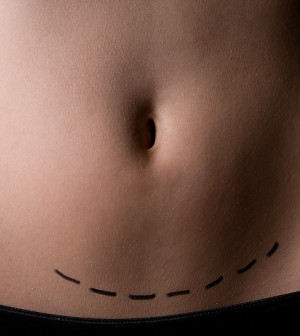- Skip Storing This Everyday Product in the Fridge Door
- Green Tea + B3 Pairing May Boost Brain Health
- Navigating Your Midlife Crisis: Embracing New Possibilities
- City Raccoons Showing Signs of Domestication
- Mapping the Exposome: Science Broadens Focus to Environmental Disease Triggers
- One Week Less on Social Media Linked to Better Mental Health
- Your Brain Changes in Stages as You Age, Study Finds
- Some Suicide Victims Show No Typical Warning Signs, Study Finds
- ByHeart Formula Faces Lawsuits After Babies Sickened With Botulism
- Switch to Vegan Diet Could Cut Your Greenhouse Gas Emissions in Half
Kidney and Thyroid Cancer Rates Up Among U.S. Children, Study Finds


Although the overall rate of cancer in American children and teens remained stable during the last decade, rates of thyroid cancer and kidney cancer seemed to be on the rise, a new study says.
The rate of thyroid cancer saw annual increases of nearly 5 percent and a specific type of kidney cancer, called renal carcinoma, had average increases of 5.4 percent per year, according to the study.
The researchers also found that cancer rates among black children and teens increased 1.3 percent per year. But one doctor not involved with the study said the finding could be a statistical “fluke.”
“It’s scary to see an increase, but these cancers are overall very rare and the increases very small,” said lead researcher Dr. David Siegel, a pediatric hematology/oncology fellow at Children’s Healthcare of Atlanta.
“We don’t want to give a message that’s alarming,” he said.
From 2001 to 2009, the overall rate of cancers among children and teens remained stable at about 171 cases per million each year, Siegel noted.
Although the researchers didn’t look at the reasons for these increases, obesity and perhaps exposure to radiation from X-rays or CT scans may have played a role, he suggested.
Siegel hopes that these findings will encourage investigators to find out the “driving forces behind these increases.”
The report was published in the Sept. 8 online edition of the journal Pediatrics.
Dr. Ziad Khatib is director of neuro-oncology at Miami Children’s Hospital. He pointed out that “the good news is that there is no overall increase in cancer in children.”
Khatib said that the increases in thyroid and kidney cancer are small enough that they might just be a statistical error.
“It could be that we are detecting more of these cancers. Compared to 20 years ago, we do more MRIs and more ultrasounds, so we may be catching more of these cancers than we used to,” explained Khatib, who was not involved with the study.
Years ago, cancers of the thyroid or kidney might not have been diagnosed until the child was a young adult of 20 or 30, he added.
Khatib said the increase in these cancers might reflect radiation in the environment and the increased use of X-rays and CT scans. In addition, chemicals in the environment and those used in processed foods may play a part in the increase, he suggested.
According to Khatib, effective treatments are available for these types of cancers and the outcomes are generally very good. “They are easily treatable with surgery,” he said.
And the rise in cancer among black children might reflect better access to care and therefore earlier diagnosis, Khatib noted. “Time will tell in the next report in 10 years whether this was a fluke or a real increase,” he said.
“Cancer is still rare in children,” Khatib explained. “So there is no reason to panic.”
Khatib added that parents should, however, be concerned about the amount of radiation children get from X-rays and CT scans. In addition, a healthy diet, exercise and not becoming obese all help prevent cancer, he said.
According to the report, the rates of some cancers decreased. A significant 2 percent decrease per year in cancers called extracranial and extragonadal germ cell tumors was also seen. These cancers arise from stray sperm or egg cells that travel to other parts of the body and become cancerous tumors.
Cases of melanoma skin cancer also dropped by almost 4 percent per year, the study found.
For the study, Siegel’s team used data from the National Program of Cancer Registries and Surveillance, Epidemiology, and End Results statewide registries. In all, they identified more than 120,000 cancers among children up to 19 years of age during 2001 to 2009.
More information
For more about childhood cancer, visit the U.S. National Cancer Institute.
Source: HealthDay
Copyright © 2025 HealthDay. All rights reserved.










